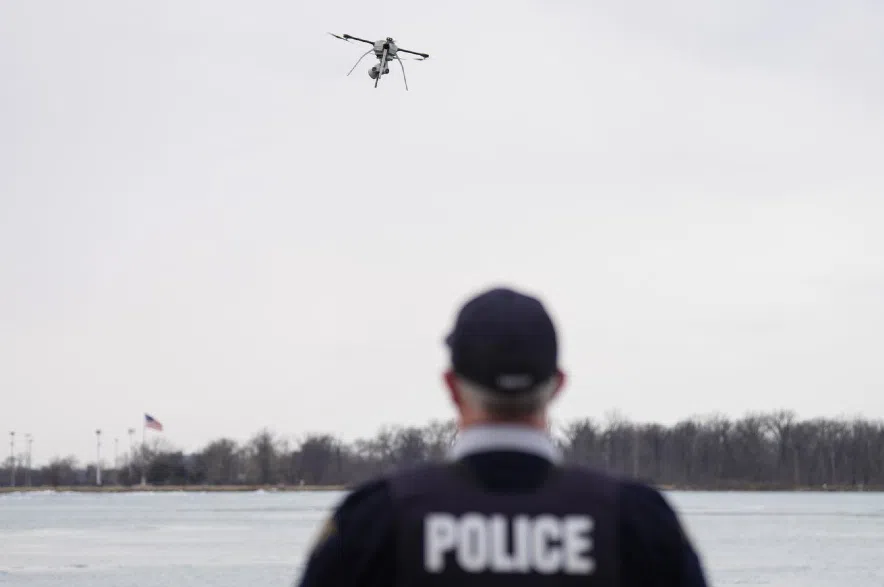Saskatchewan is included in an RCMP trial that will use drones to patrol a corridor along the U.S. border.
RCMP said in a news release on Aug. 11 the border corridor trial also covers Alberta and Manitoba, and is designed to “enhance border security and support the safe, coordinated use of drones within Canadian airspace” at the border.
Read more:
- Three charged after allegedly using drones to deliver drugs to Sask. Penitentiary
- Drone technology becoming more common on farms
- Saskatchewan introduces border plan in wake of Trump tariff threat
The corridor, set up with the help of with Transport Canada, will allow RCMP to search for anyone illegally entering Canada and for the human smugglers who help them, the release said.
RCMP also said the drone patrols will detect and stop illegal smuggling and trafficking of contraband like illegal drugs.
The corridor goes into operation at 9 p.m. on Aug. 11 and extends to just over 152 metres (500 feet) above the ground, 1.85 kilometres from the border, and does not restrict flight activity, the release said.
Local pilots, agricultural operators, and recreational aviation users may continue to fly in the area but are asked to exercise increased caution, and to notify the RCMP before entering the corridor, with the goal of reducing the risk of “mid-air conflicts”, and making the drone patrols safer, according to RCMP.
Anyone planning to fly in the corridor, can use an ADS-B Out system that transmits aircraft location or notify the RCMP in advance of the flight.
For more than 24 hours advance notice people can email NWRRPASNWRSAT@rcmpgrc.gc.ca and for shorter notice call 866-475-4238 in Saskatchewan.
People unable to contact anyone at that number should then try Alberta at 833-476-4238 or Manitoba at 888-626-4238, RCMP said.
The release said the initiative will be “continually evaluated and assessed” for operational value, cost and impact on border communities, and that community feedback will be incorporated in the evaluation process.
The RCMP in Saskatchewan has been using drones for crime-scene photography, incident monitoring, accident reconstruction, “reconnaissance of hazardous environments,” search and rescue, and disaster response since 2023.
Read more:











